The making of Quaffine, India’s first homegrown cold brew coffee liqueur
Indie Brews & Spirits’ Quaffine pays homage to the 8,000 years of coffee history.
The signature cocktail espresso martini is nothing like other classic cocktails. It is smooth yet frothy, buzz-inducing and delicious. And the origin story of the coffee-vodka drink is just as unique.
Back in the 1980s, a world-famous model (speculated as Kate Moss or Naomi Campbell) walked into Soho House in London and asked cocktail king Dick Bradsell to make her a drink that would, her own words, “Wake me up, then f**k me up.”
Bradshell, who happened to have an espresso machine at his bar, mixed a shot of espresso, some sugar syrup, and a shot of vodka and shook them together to invent the ‘vodka martini’—later known as the ‘espresso martini’.
Capable of working like an upper and a downer, the espresso martini remains a popular drink across the globe. And then came Kahlua, a rum-based coffee liqueur by Pernod Richard, making bartenders reach for the bottle every time someone ordered an espresso martini.
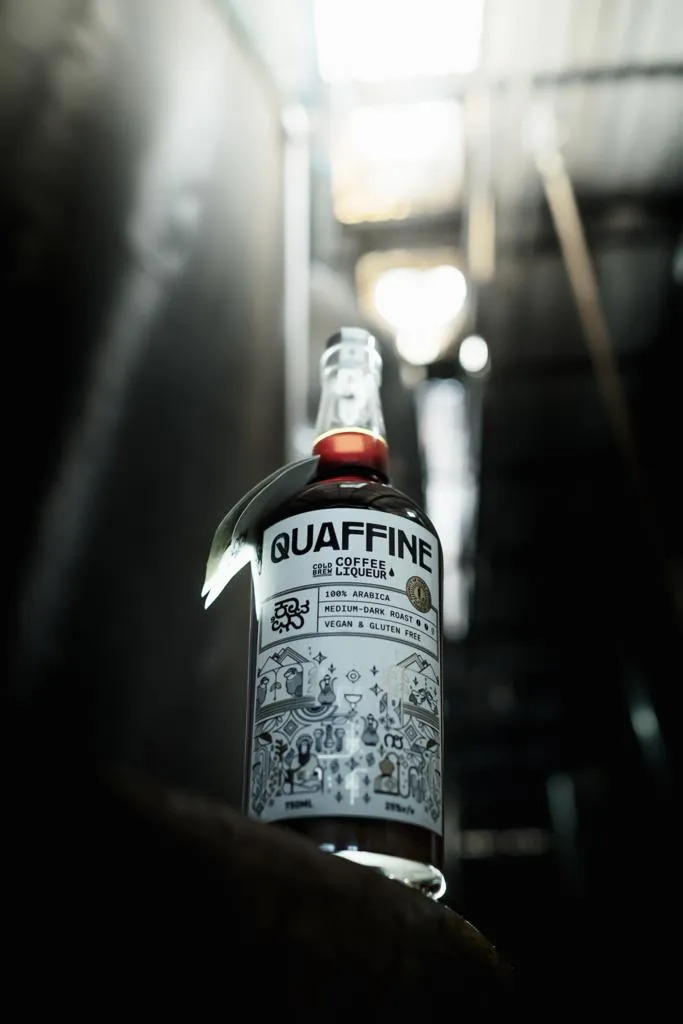
Photograph: Manan Sodhi
With India’s alco-bev scene picking pace, Isaac Vivek Mani and Olson Pereira founded Indie Brews & Spirits and launched Quaffine– the country’s first homegrown cold brew coffee liqueur in the sunshine capital of Goa.
Recently YS Life accompanied Nikhil Varma, Co-founder of Quaffine, to the Blue Ocean Beverages distillery in Goa to get a closer look at the making of Quaffine.
The process
Quaffine is made from three basic ingredients–coffee, sugar and neutral spirit.
In an attempt to be ‘homegrown’ in its truest form, Indie Brews & Spirits sources single-origin 100% arabica coffee from an altitude of 3,500 feet in Chikmagalur, Karnataka. The coffee is first roasted medium-dark and ground to a cold brew specification. Distiller Varma then makes a large batch of cold brew by packing the coffee in locally stitched terrycot bags and steeping them in room temperature water for 12 to 24 hours.
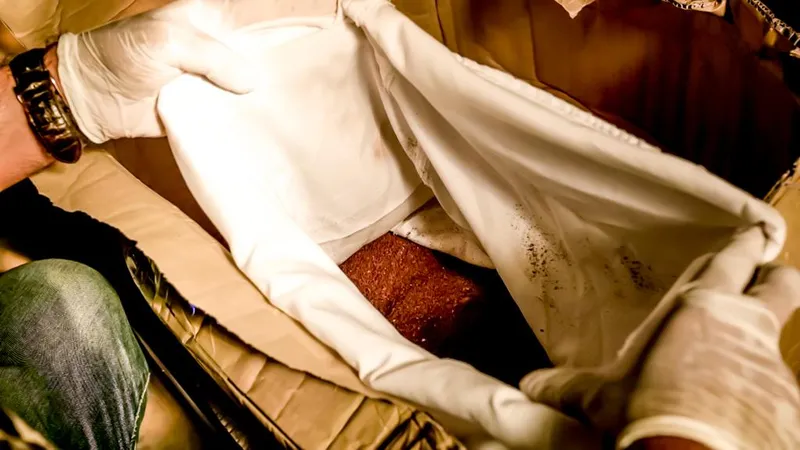
The medium-roast ground coffee used for making the cold-brew | Photograph: Manan Sodhi
An absolute delight for coffee lovers at this stage itself, the said produce is then measured to analyse and finalise the amount of neutral liquor and sugar to be added to make the final recipe.
The spirit, sourced from North India, is a mix of two different spirits, one of them being rice spirit.
“We add the spirit and sugar in batches to ensure that the final product is coffee-forward and the final liquid is homogeneous in nature,” Varma explains.
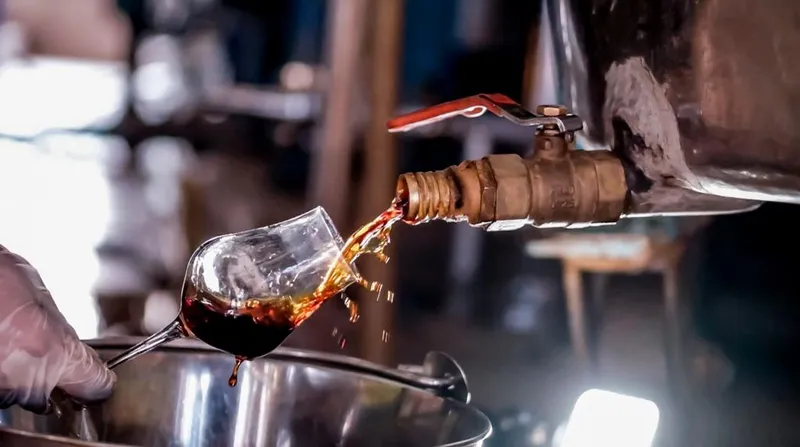
The cold-brew obtained after steeping the coffee for 12 to 24 hours | Photograph: Manan Sodhi
Once the liquor is married, it is rested for about 10 days in a tank, to allow the liqueur to mature.
Once mature, Quaffine is bottled and set to rest for at least a fortnight until it is sent to the market for distribution and sale.
“The second phase of ‘marrying’ happens after bottling the product. Which is why, when you buy a bottle of Quaffine, we advise you shake the bottle well before pouring the liquid out. In fact, the taste matures over time,” Varma points out.
“We have realised that some of our older batches have just gotten so much better, in terms of taste profile. So, we decided to rest it in the warehouse for at least 14 days before sending it out in the market,” he adds.
Usually, each batch requires 125 kg of coffee to make 200 cases of Quaffine. That translates to 65 grams of coffee (or eight shots of espresso) in every bottle of Quaffine.
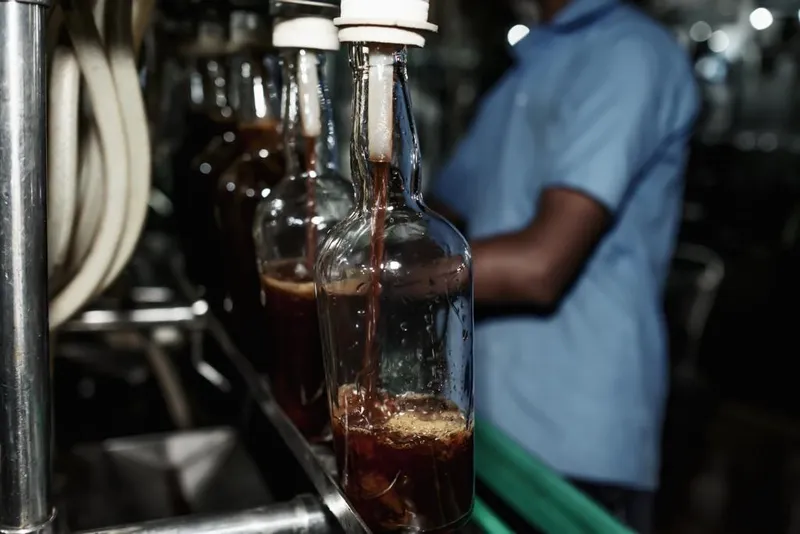
Bottling of Quaffine | Photograph: Manan Sodhi
Indie Brews & Spirits has increased the ABV (alcohol by volume) to 25% from the usual 16 to 18% (in other coffee liqueur). However, despite the high volume of alcohol, Quaffine manages to remain coffee-forward without the ‘punch’ of alcohol, owing to the process of ‘marrying’ the liquid.
The sugar is adjusted to ensure the perfect espresso martini. Varma says while the likes of Kahlua use close to 40 bricks (the unit of measurement of sugar concentration in liquids), Quaffine uses about 27 bricks of sugar.
On the nose, Quaffine has prunes, dates, coffee, raisins, and roasted nuts with a pinch of butterscotch. On the palate it is coffee bite, fudge and caramel, with a hint of nuts and a creamy, sweet, coffee and chocolate finish.
The brand claims the liqueur is vegan and gluten-free. Quaffine is devoid of any artificial flavours, extracts and additives, says Varma.
What’s in a label?
Every homegrown brand in India aims to sell a story, through its product and offerings. For Quaffine, its story lies in the label.
The mother-daughter duo of Kanchana Chandiramani and Briana Chandiramani, who run a design, packaging and production company in Mumbai, joined hands with Mani and Pereira, as co-founders, and designed a label that tells seven stories related to the history of coffee and espresso martini.
Quaffine–a combination of the words ‘caffeine’ and ‘aqua’—translates to ‘cold brewing’. ‘Quaff’ is an old English term which means ‘to drink something heartily’. ‘Aquavitae’ is an old Scandinavian term for ‘water of life’ or alcohol.

The Quaffine bottle
The mountains in the label represent the mountains of Chikmagalur; they signify the altitude of 3,500 feet above the sea level where the team sources its coffee from. Right below is an illustration of two sheep with a cherry at the bottom and two leaves. The significance of this goes back to the origin story of coffee. According to Ethiopian legend, a goat shepherd by the name of Kaldi accidently discovered coffee.
Next, there is a picture of Baba Budan, a 17th century Sufi saint who introduced the coffee plant in India. Varma says Budan is also the mascot of Quaffine. The sugarcane in the saint’s hands denotes sucrose—the sugar base that is used in Quaffine.
The Alembic pot signifies that the brand uses the highest quality of spirit.
The illustrations of two elephants and Quaffine written in Kannada script pay homage to the state of Karnataka.
The overflowing chalice represents espresso martini.
Finally, the last illustration depicts how coffee was introduced to Brazil.
“We want to take our customers through the coffee journey and all of these stories equate to 8,000 years of coffee journey,” says Varma.
How to drink it
Quaffine positions itself as a versatile coffee liqueur and can be consumed as a shot, on the rocks, as an espresso martini. ‘Quaffinated’ is an old-fashioned drink.
We liked the espresso martini the best.
At present, Quaffine is only available in Goa for a price of Rs 1,650. The brand plans to expand soon to Bengaluru, Mumbai, Pune and Delhi.
Try these!
Pereira, also the in-house bartender at Quaffine, shares two cocktail recipes for our readers to try.
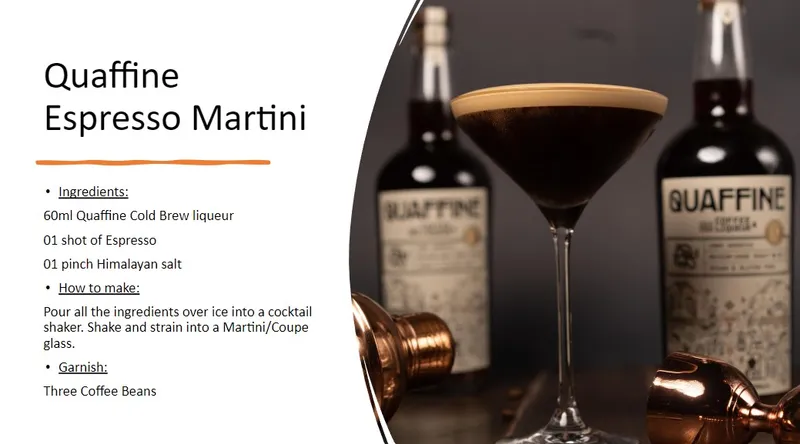
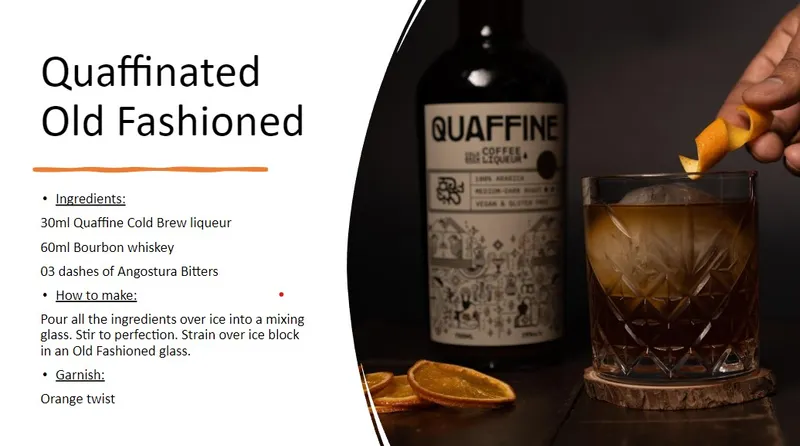
Edited by Swetha Kannan







